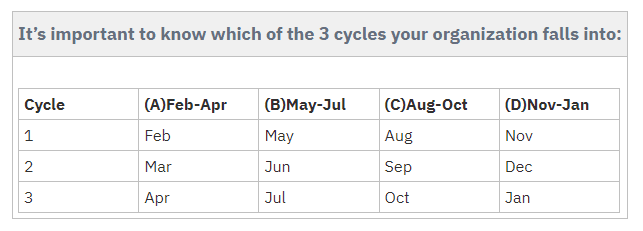If you’re reading this guide, there’s a high chance that Oracle Cloud Apps play a critical role in your enterprise. As such, it’s important that you understand the core issues related to Oracle updates and testing, so you can leverage your apps to its fullest.
In this guide, we answer the most Frequently Asked Questions related to Oracle Cloud App updates, and their associated testing.
What are Oracle Cloud quarterly updates?
Oracle Cloud apps are based on the principle of continuous innovation. This means that Oracle rolls out new features, functionalities, and security enhancements every quarter to help customers better manage their business. Customers have no choice but to keep up with these updates, and only have a 2-week window to test application changes.
What is the timing of Oracle Cloud Quarterly updates?
Oracle rolls out four updates per calendar year–one each quarter. The versions are numbered using the year, plus the letter for the quarter released, such as 19D, 20A, or 21B. The cycles go as follows:
- Feb-Apr, (B) May-Jul, (C) Aug-Oct, (D) Nov-Jan

Why should you care about the impact of Oracle Cloud Quarterly updates?
Oracle is the core of your enterprise’s business processes: it contains hundreds of thousands of real-time data entries and transactions at every level of your organization, and its health is vital to the correct functioning of your company. Because of this, it’s important that you understand how quarterly updates are going to impact existing processes and procedures.
Oracle Cloud updates have the potential to affect a variety of functionalities, so if you push through an update without adequate testing, then existing processes can break. Therefore it is recommended to regression test all your critical business processes with each update. You should also test critical reports, key workflow approvals, and integrations with other applications, so you can be assured that the updates won’t cause your enterprise any harm.
What Should You Test?
In general, you should execute tests across all critical business functions before the patches go into production. Areas to include in your test plan include:
- Business process flows for different roles in the organization
- Critical custom reports
- Integrations with other applications
- Custom workflows (journal, invoice, PO approval, etc.)
- Security roles and user privileges
- UI testing
- UAT testing
Why is manual testing not a viable solution?
Every time a quarterly update is rolled out, two cycles of regression testing are required – one in the test environment and one in the production environment. This means that Oracle requires regression testing at least 8 times per year. Manual testing is not a viable solution because physically clicking, entering data, and navigating through multiple screens can take hours to test just one test scenario!
With manual testing processes, there’s also a lot of guesswork involved. Organizations either test too much—wasting precious time and money—or test too little, which leaves their business processes exposed to risk.
In addition to the stress of 8 rounds of testing per year, Oracle only offers two weeks to test each update. The updates are applied to your non-production environments first, and then two weeks later, they’re applied to the production environment. This schedule cannot be changed, so you must test quickly. When manual testing is performed quickly, it often contains human error.
Why is test automation the best way to handle Oracle updates?
The benefits of Oracle test automation are clear: you can test updates quicker, for less money, and with greater test coverage.
With manual testing approaches, enterprises can either move quickly and risk application breakage, or move slowly, and lose out on operational improvements. With automated testing, no compromise needs to be made: enterprises can test all their critical business processes in a short period of time, and still be assured that those processes will not break.
You can learn about 7 other key benefits of automating your Oracle testing by reading this blog.
Can Selenium be used to automate Oracle tests?
The most popular code-based Oracle test automation tool is Selenium. It’s open-source, and enables automation through a browser. However, when it comes to Oracle testing, Selenium is not a technically fit platform because Oracle apps are highly dynamic and Selenium cannot effectively locate Oracle elements on a screen. As such, there is a ton of maintenance work required when testing Oracle updates with Selenium, and at the end of the day, it’s not much more efficient than manually testing updates. Read our blog to explore why Selenium is not technically fit to test automate Oracle.
Is there any other test automation tool for Oracle?
Apart from Selenium, other popular Oracle test automation frameworks include OATS & Opkey.
Which is better for Oracle test automation – OATS or Opkey?
To find answer for this question, you need to read our whitepaper“Automating Oracle Testing: All You Need to Know”



